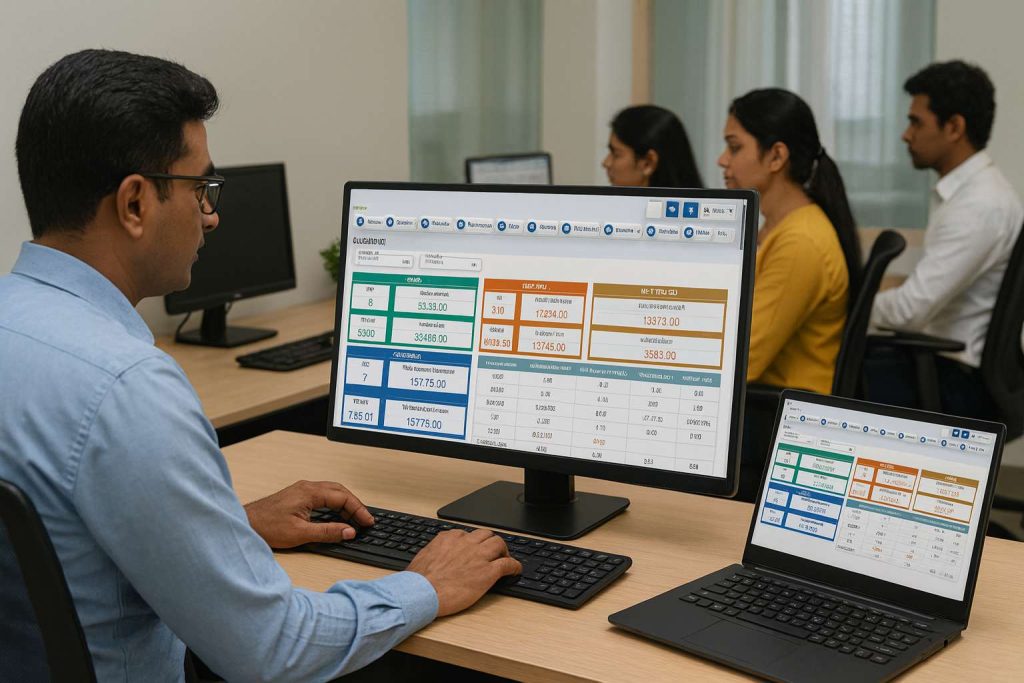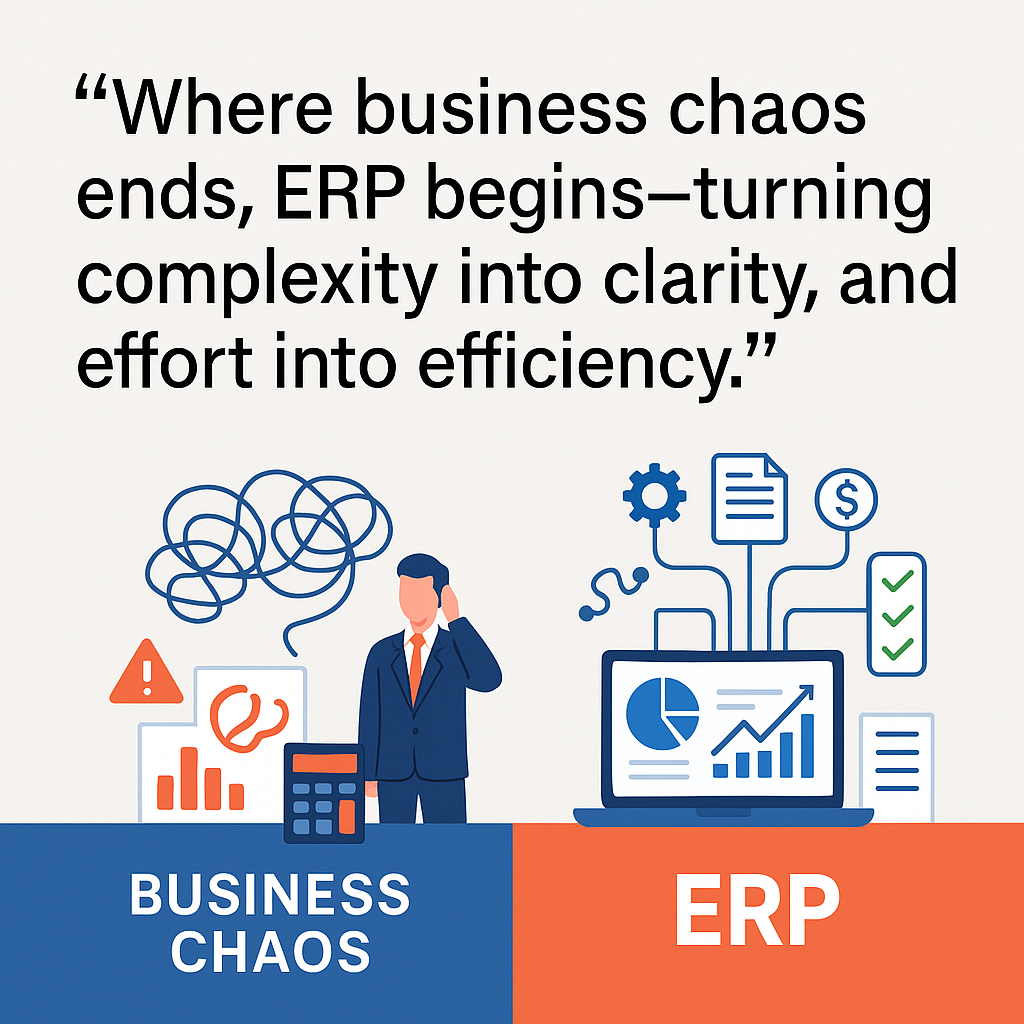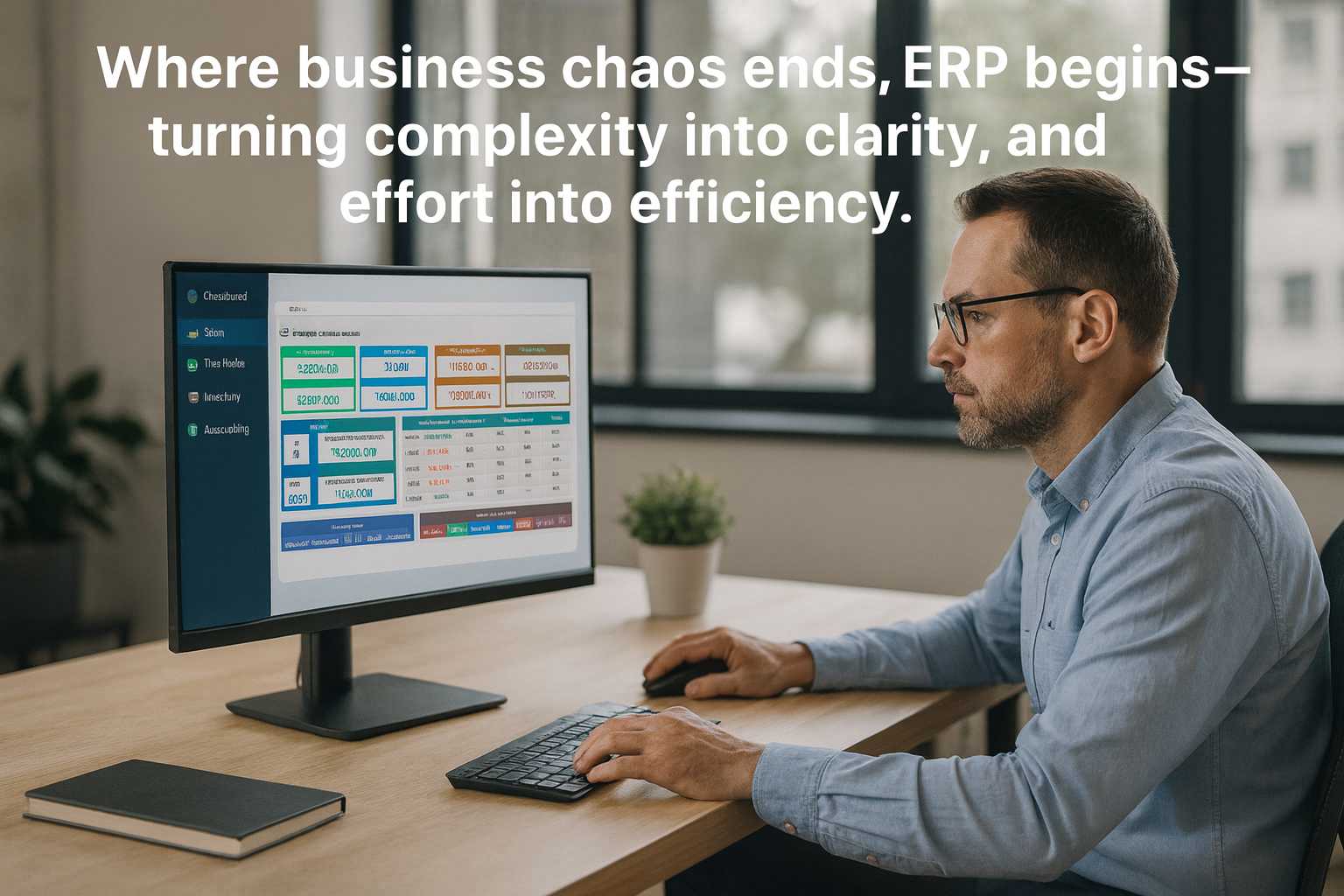Where Business Chaos Ends, ERP Begins
Every business leader dreams of running an organization that is smooth, structured, and growth-driven. But the reality in most companies is very different. Sales teams work on one set of spreadsheets, the accounts department maintains its own records, HR struggles with employee data in scattered files, and managers spend hours every week reconciling mismatched reports. This scattered approach creates what we call business chaos — a state where effort is high but results are low.
This is exactly where ERP (Enterprise Resource Planning) software steps in. ERP is not just another software tool; it is a complete business management system that replaces disconnected processes with a single integrated platform. It eliminates chaos, connects departments, automates workflows, and gives leaders real-time visibility.
That’s why the statement is so powerful:
“Where business chaos ends, ERP begins—turning complexity into clarity, and effort into efficiency.”
Understanding Business Chaos in Detail
Chaos in business doesn’t always look like a crisis — it often hides in daily inefficiencies:
- A sales order is booked but inventory isn’t updated, leading to stockouts.
- HR calculates payroll manually, causing delays and errors.
- Finance teams spend hours preparing monthly reports because data is scattered.
- Managers don’t know the actual profit margin until weeks later.
This hidden chaos is what silently kills productivity. It may not grab attention immediately, but over time it causes missed opportunities, customer dissatisfaction, and financial leakage.
Now imagine if all of these processes were connected in real time. That’s what ERP delivers — a single source of truth for the entire organization.
From Complexity to Clarity
Business operations are naturally complex because they involve multiple processes running simultaneously. A single sales order might affect five different departments — sales, accounts, inventory, production, and logistics. Without integration, these departments act like islands, and complexity multiplies.
ERP simplifies this by connecting every department in one system. When a sales order is created:
- The inventory module checks stock automatically.
- If stock is low, the purchase module generates a requisition.
- The accounts module creates an invoice instantly.
- The production module adjusts schedules.
- Management sees the updated order status on their dashboard.
Instead of chasing updates across departments, clarity is available at a glance. Everyone in the organization works from the same data, eliminating confusion.
Turning Effort into Efficiency
One of the biggest drains on businesses is repetitive manual work. Staff spend hours reconciling numbers, copying data between systems, and preparing reports. This effort is not only time-consuming but also prone to errors.
ERP transforms this effort into efficiency by automating routine tasks.
- Payroll is calculated automatically based on attendance.
- Billing is generated instantly with correct tax structures.
- Reports are available in real time instead of being manually compiled.
- Inventory is auto-updated with every transaction.
This means employees spend less time on low-value tasks and more time on strategic activities like improving customer service or planning growth.
👉 Analogy: Running a business without ERP is like sailing a ship without a compass. You keep moving, but you don’t know if you’re heading in the right direction. ERP gives that compass — it provides direction, clarity, and accuracy in every move.

ERP in Action: An End-to-End Workflow
Let’s see how ERP works in a real scenario using a manufacturing company example:
| Step | Without ERP (Chaos) | With ERP (Clarity & Efficiency) |
|---|---|---|
| Sales Order | Recorded manually, delays in sharing with accounts & inventory | Entered once; auto-updates finance, inventory, and production |
| Inventory | Updated at month end; often inaccurate | Auto-deducted in real time per order |
| Purchasing | Manual requisition; prone to duplicate orders | Auto-triggered purchase request when stock is low |
| Finance | Bills prepared separately; errors common | Invoice auto-generated with correct taxes |
| HR/Payroll | Manual overtime entries for production staff | Auto-updated shifts linked to payroll |
| Reports | Takes weeks to compile across departments | Real-time dashboards for instant decisions |
This shows how ERP not only saves time but also ensures consistency across the organization.
Industry-Specific Clarity
ERP is powerful because it adapts to different industries:
Retail
In retail, ERP connects point of sale, inventory, suppliers, and finance. When an item is scanned at checkout, inventory is auto-updated, purchase planning begins, and sales reports are instantly available.
Restaurants
ERP for restaurants integrates order taking, kitchen display, billing, and stock control. When an order is placed, it directly updates the kitchen, adjusts ingredient stock, and reflects in sales data — creating a smooth dining experience.
Manufacturing
In manufacturing, ERP manages production planning, raw material tracking, quality control, and delivery. It ensures that supply chains run without disruption, reducing wastage and maximizing efficiency.
Services
For service industries, ERP tracks projects, employee productivity, client billing, and compliance. Every task, from time logs to invoicing, is connected in a single system.
In every case, ERP transforms complexity into clarity.
From Data to Decisions
One of the biggest advantages of ERP is business intelligence. Leaders don’t need to wait until month-end to know how the company is performing. With ERP dashboards:
- Sales trends are visible in real time.
- Top-selling products and services can be identified instantly.
- Financial health is always updated.
- Predictive analytics help forecast demand and plan ahead.
This means decisions are not reactive, but proactive. Businesses move from guesswork to growth strategy.
Chaos is costly. It wastes time, drains energy, and slows growth. ERP is the solution that turns this chaos into clarity, effort into efficiency, and complexity into simplicity.
| Area | Before ERP | After ERP |
|---|---|---|
| Sales Orders | Paper + Excel, delayed updates | Instant digital entry across modules |
| Inventory | Manual month-end reconciliation | Real-time updates with alerts |
| Finance | Manual invoices & delayed reports | Auto-generated invoices, instant reports |
| HR/Payroll | Week-long manual work | Fully automated, error-free payroll |
The transformation was not just about efficiency — it allowed the business to grow, because managers finally had time and clarity to focus on expansion.

With ERP solutions like WiderERP by Zymofar Dynamic Products, businesses can finally achieve what they have always wanted:
- Integrated processes instead of scattered efforts.
- Real-time visibility instead of delayed reports.
- Automation instead of repetitive manual tasks.
- Growth and scalability instead of limitations.
As the quote says:
“Where business chaos ends, ERP begins—turning complexity into clarity, and effort into efficiency.”
👉 Adopt ERP today, and give your business the clarity and control it deserves.
🚀 Book Your Free Demo Today!
Ready to simplify your business operations with ERP, POS, and Billing Solutions?
Let Zymofar Dynamic Products Pvt. Ltd. show you how our software can transform your business.
📍 Bangalore, India
📞 +91 7090335533
🌐 https://zymofar.com


